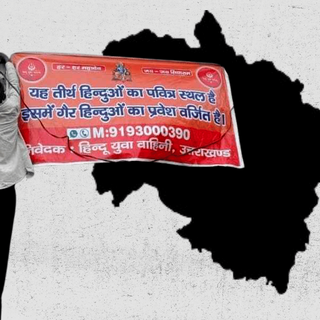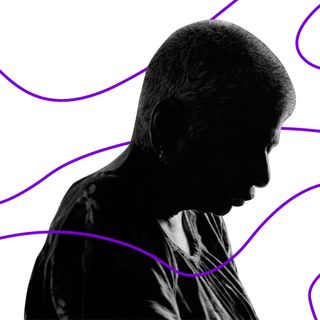“I’ve never been to a clinic or hospital throughout my life. I delivered my two babies at home,” says Habija Khatun, 35, a resident of Baghmari, one of the chars, or river islets, off the banks of the Brahmaputra River in Assam.
“I didn’t know ASHA [government healthcare worker] was supposed to take me to a hospital once in three months during my pregnancy, give me iron and folic acid tablets, or call an ambulance in case of emergency. I never visited a hospital for check-ups or sonography or medicines. I delivered my son and daughter with the help of family members,” says Amina, another resident.
Habija and Amina are not alone. According to the residents of these areas, almost eight in 10 women — all of the ones who don’t face complications — deliver babies at home.
Chars or chaporis are riverine islands in the Brahmaputra made of silt deposits. These areas are not only extremely vulnerable to natural disasters, like floods and cyclones, but also regularly experience erosion upstream and deposition downstream. With the ground literally shifting beneath their feet, residents live in extreme poverty and instability, constantly migrating to find higher ground. Located in the middle of the river, char residents are cut off from the mainland and the basic health care infrastructure there.
Samira Ali, 24, was married at 13 years old and has two children. She recalls having severe pain before delivering her second. To get medical care, “my husband, neighbours, and relatives made a stretcher by tying together bamboo sticks with a sari. It was extremely uncomfortable, but I did not have an option,” she says. “They walked for 3 or 4 kilometers in the night. As we don’t have electricity in most of the villages, walking at night is extremely risky because of animal attacks. Finally, we reached Mahamaya from where we could hire a car. Thankfully, I did not deliver the baby during the journey.”
“People in emergency conditions have to be carried on [such] makeshift stretchers. Ambulances can come if there is road accessibility, but most char villages don’t have access to the mainland,” says Rehna Sultana, an anganwadi worker.
Related on The Swaddle:
Odisha’s Maternity Benefits Are Touted as a Success; That’s Only Half the Story
Mustafa Ali, 65, has regular body pains, but he cannot get from his char village to a government hospital. “Going to the government hospital in Dhubri or Mahamaya is an adventure. It takes four hours to walk to Dhubri through dirt roads and handmade bamboo bridges,” he says. “In the monsoon or when it floods, it still takes four hours to reach Dhubri by boat. Basically, reaching the district hospital is a struggle for all the residents here. There are no private clinics, and people don’t have money to go to clinics elsewhere.”
Under the National Health Mission, primary health centres (PHCs) were established for every 30,000 people in rural areas and every 20,000 in hilly, tribal, and/or desert areas. As per the norms, there must also be one sub-centre for every 5,000 people in plain areas and for every 3,000 people in hilly, tribal, and/or desert areas. Assam’s 14 districts along the Brahmaputra have 52 PHCs and 132 sub-centres, but that is merely one PHC per more than 42,000 people and one sub-centre per more than 18,000. These numbers are alarming, to say the least, and lead to severely compromised health for residents, particularly those already isolated by the river that surrounds their homes.
“Majority of people go to the district hospital in Dhubri or Guwahati when their condition is serious. Otherwise, they take medicines from pharmacies which are everywhere. Nobody knows if they are registered or not. There are many quack doctors or babas as well,” says Abdul Mannan, of the Xeuji Foundation in Dhubri, a health-focused NGO.
“Most of the sub-centres at char villages are either closed or not equipped with mandatory auxiliary nurse midwife and health workers,” he adds. “There is no survey to know how many people with disease live without treatment or how many die without getting proper treatment.”
This severe absence of health care infrastructure has resulted in another serious issue – illegal pharmacies.
“I get supply of medicines for basic problems like fever, cold, body pain, and so on. People from Dhubri supply me those medicines,” said a man who runs the pharmacy at Mayar char, on the condition of anonymity. He refused to disclose whether the pharmacy was registered or whether he had a proper degree and license to run it. Local residents say such doubtful pharmacies are everywhere in the chars. The many dangers to giving out illegal prescriptions without doctors have the potential to exacerbate the existing healthcare issues in the region.
Tarabano Bibi, 55, a resident of Gutipara, a char village, does not have a gas cylinder or a toilet at home. “My husband has tuberculosis and I’ve had to take him to the government hospital in Guwahati thrice till now. I must have spent more than Rs 3 lakh for traveling, stay, treatment cost, and medicines,” she says. She has five sons and two daughters and cultivates rice and vegetables on her two acres of land. She cannot afford to spend money in lakhs and has gone deep into debt.
For Tarabano and many others like her in the islets, the basic right of healthcare is a distant dream. Although there are currently no Covid19 cases in the area, the severe lack of healthcare infrastructure could easily have a disastrous impact on the community should one develop. In any event, residents’ current health struggles are enough — and injust. It is thus urgent that the government take notice of the ways in which healthcare doesn’t reach the furthest parts of the nation and work towards a more equitable future.




